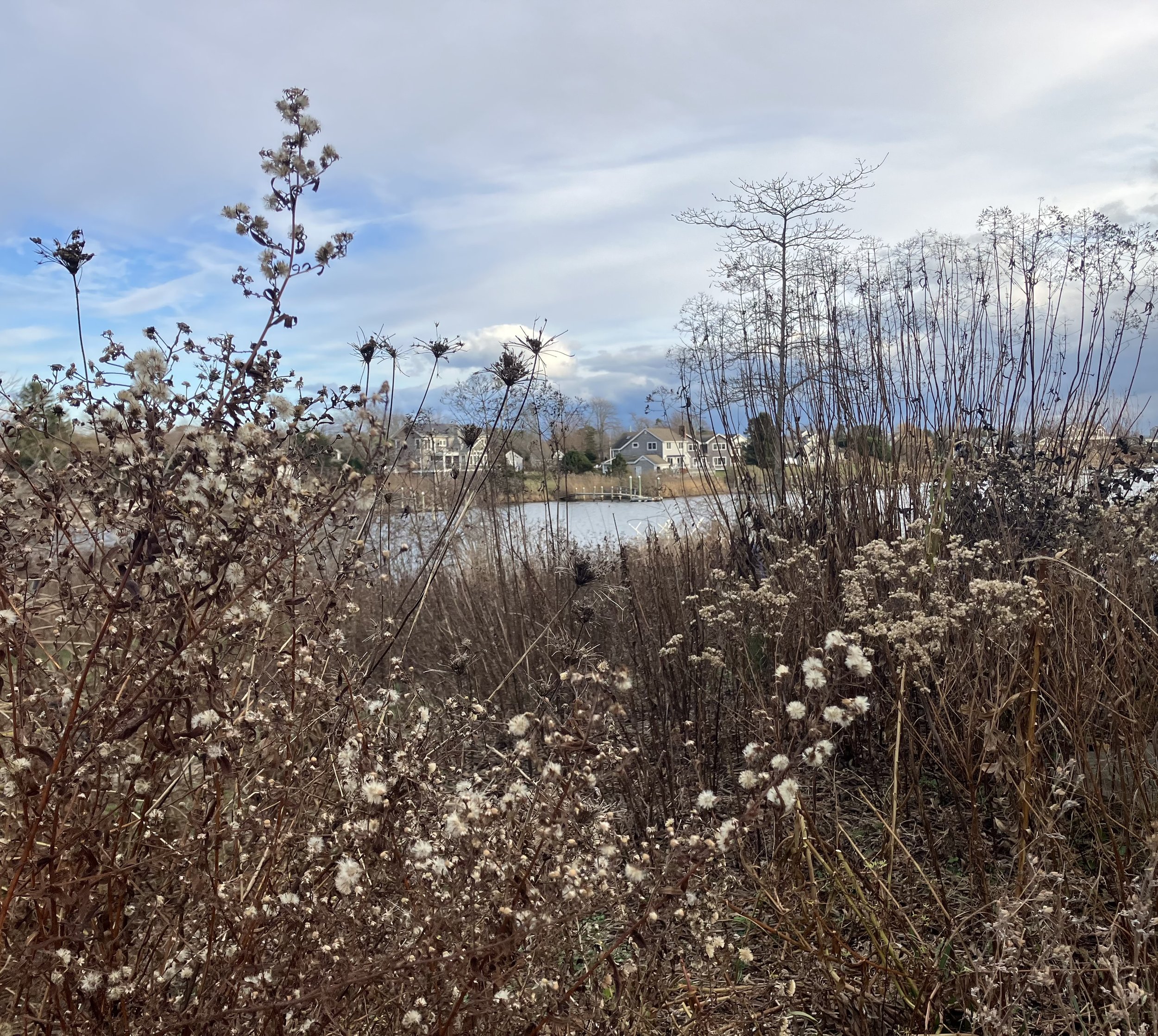The Bones of the Garden
When we think about fall cleanups, cutting down dead stalks and raking leaves often come to mind.
However, as our clients become increasingly aware of the perils of habitat loss and the importance of native plants and insects, putting the garden to sleep has also become a more ecologically-centered practice.
Especially in native gardens and meadows, our team leaves stalks standing and leaves covering the soil.
The benefits of this practice are manifold. For birds, stalks with seed heads provide a valuable food source, a place to perch, material for nest building, and a protective screen from the freezing wind. Stems are also important to my favorite garden dwellers - insects. Native bees use hollowed stalks to lay eggs, while praying mantis glue their egg sacks onto the side of stems (although keep an eye out for invasive mantis cases!). Leaving leaves in our garden beds also provides shelter and food for millipedes, bumble bees, salamanders, turtles, frogs and many many others. Another plus- leaves enrich our soil as they break down and act as a natural mulch.
Aside from the ecological benefits of these practices, I find the visual effect to be tremendously pleasing. There is nothing so beautiful as the skeletal shapes of verbena hastada, joe pye weed, and native grasses like little bluestem swaying in the breeze. The soft frothy seeds of goldenrod, the dark bold heads of black eyed susan, and the sweet rounded buttons of bee balm are amongst my favorite winter characters. Lit by pale December light, they create structure and interest where in the conventional garden, with all perennials cut a few inches above the ground, there would be none. They are the bones of the garden.

